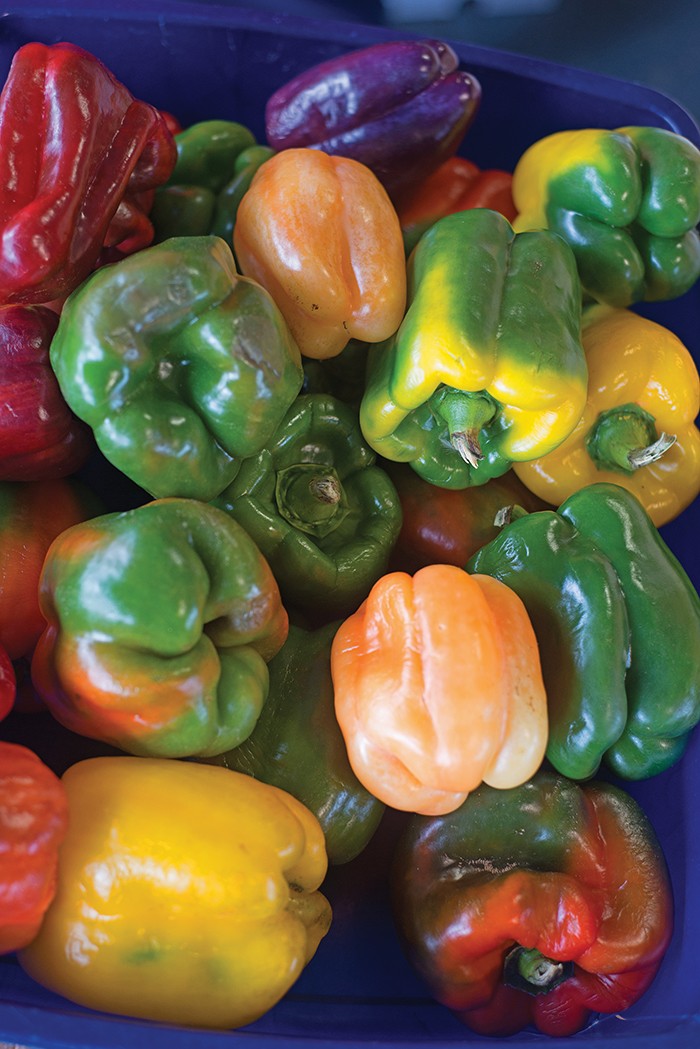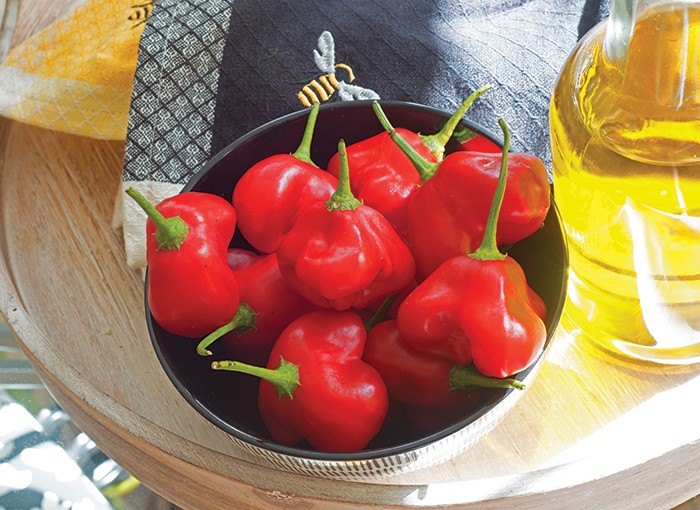Pepper gardeners seem to be divided into two groups: Those who play it safe by growing the sweet, mild bell peppers, and brave souls who insist on raising an insane flamer such as the regionally infamous Carolina Reaper.
There is a middle ground, however — peppers that look like they should be hot but are not. These peppers come in suspicious shapes usually associated with ones scorchingly fit for a devil’s dinner, but are actually quite mild.
There are a few such pepper possibilities suitable not only for your veggie garden but, because many sport festive, colorful appearances, even ornamental beds. And, no, they won’t be hard to find. Last year, I spotted all of these locally at either Home Depot or Lowes, and I know many nursery centers around town have even more born-to-be-mild selections.
Shishito. A classic variety from Japan, this pepper is typically picked while still green. The finger-like fruits with thin skins and little or no heat are must-have additions to stir-fries and tempura dishes.
Cubanelle. Green, red, yellow, orange — these are all on this pretty pepper’s palette of colors as the fruits mature. Looking like a stubby Shishito, it is often a preferred substitute for bell peppers in many quick-cooked dishes.
Sweet Banana. True to their name, the 6- to 7-inch yellow fruits (which eventually ripen to a sassy scarlet) of this pepper do look like miniature bananas. With little or no heat infused in their taste, it is a milder dead ringer of the spicier Hungarian hot wax pepper.
Coolapeno. Rhymes with jalapeno for a reason — it has the look and flavor of a jalapeno but without the spicy twang. Young green fruit might have a little bite, but this fades away and is replaced with more sweetness as the peppers ripen to a rich red.
Mad Hatter. My favorite alt-hot pepper just because of its name, which suggests one bite will send you screaming out of the garden, but that’s not the case. This All-American Selections winner with weird, hat-shaped fruits that blaze in a dazzling red actually have a sweet taste with only a hint of heat close to the seeds.
Giant Marconi. Another All-America Selections winner, this stubby pepper might telegraph the looks of a hottie, but the 8-inchlong green fruits with a smoky sweet flavor only warm up to about 1000 Scoville Heat Units, and this rating dips even lower as they mature to a handsome crimson.

Bell peppers
Scoville Heat Units (SHU), which can be looked up online for any pepper, is a useful scale that tells whether a variety is mild or burns enough to make you go running to Momma. Sweet, easily edible bell peppers anchor the bottom of this scale at zero SHU, while spicier selections such as Anaheim, Ancho and Poblano that top out around 2000 SHU offer tastiness with a light, teasing bite. Even more culinary kick can be had from hotter peppers like Tabasco (2000-5000 SHU), Serrano (10,000-23,000 SHU) and Cayenne (30,000-50,000 SHU). For those who insist on incinerating their insides, Trinidad Scorpion and Carolina Reaper, both chemically cooking at over two million SHU, will readily provide the desired (?) excruciating experience.
To Do in the Garden
April
- Whether hot or bell, peppers can be added to the spring garden starting the middle of this month, along with other warm-season veggies such as green beans, eggplant, cucumbers, watermelons, pumpkins, squash and tomatoes.
- New sprouts and leaves are irresistible to hungry aphids, so watch carefully for any fresh foliage suddenly curling under. Aphids like to party on the backside of leaves, so if you spot any, use a strong squirt of water from the hose to break up their mealtime. A splash of insecticidal soap will also rid your plants of these pinhead-sized problems.
- Cutworms can also be a problem at this time of year because they are attracted to young annuals. Since they usually come out at night, doing an evening patrol to pick off the offending beasties will work, but also consider knocking the bottoms out of paper cups and setting a cup around each plant as a physical barrier against these leaf-chewing pests.
- From the Spring Disease Department: Keep a lookout for any signs of what seems to be burnt branch tips. It’s fire blight, and usually afflicts plants such as raspberries, pyracanthas, pears, blackberries, apples, hawthorns and cotoneaster. Use pruners dipped in water spiked with 10 percent bleach, and, after snipping the damaged branch ends off, bag them up and toss away. Do not compost the clippings.
- Cary Celebrates 150 Years
- Nonprofit Spotlight: The Flower Shuttle
- Pregnancy is Better, Together
- Walk, Squat, Stand
- Dad Influencer Curtis Webster Jr.
- The Art of Perseverance
- Small Business Spotlight: A to Z Pharmacy
- Garden Adventurer: The Other Peppers
- Liquid Assets: Truth Serum Pale Ale from Tobacco Road Brewing
- Liquid Assets: The NC-21 (No Children Under 21), from The Provincial
- Restaurant Profile: Daybreak







